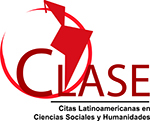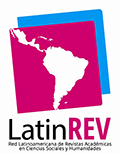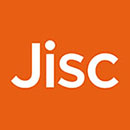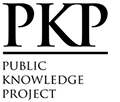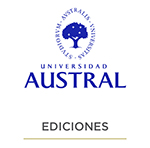Palabras clave: lenguaje claro, géneros discursivos, redacción jurídica, jurisprudencia. Plain Language at the Appellate Level: Case Comment on "Morón, Mariano Oscar v. REMAX Argentina SRL et al. on claim for damages"
Abstract
Legal language is known for its opacity and lack of clarity. Unlike other specialized languages, it is not limited to internal communications, for legal texts are not only aimed at experts. In light of the pathologies of legal discourse, the option for plain language offers the chance to reconcile clarity with the aspiration for technical precision required by the specificity of law. The case commented here shows the possibility of writing texts using a specialized language while making it easy for people not acquainted with the law to understand them. For that purpose, this decision is not written as traditional Argentine court decisions, but instead uses plain-language techniques in its discursive approach, structure, design, textual sequences, paragraphs, sentences, and vocabulary. The final result is a decision written in a novel way, in which the accidents of the decision are changed, but the substance is preserved. This decision is successful in attaining technical rigor, with enough clarity so that the likelihood of the reader understanding the message which the court is trying to convey is maximized.
Downloads
References
Adam, J. M. (1992). Les textes: types et prototypes. Récit, description, argumentation, explication et dialogue. Nathan.
Bajtín, M. (1982). Estética de la creación verbal. Siglo XXI.
Black’s Law Dictionary. (s.f.). RIPE FOR JUDGMENT Definition & Legal Meaning https://thelawdictionary.org/ripe-for-judgment/#:~:text=the%20term%20that%20is%20given,a%20final%20judgement%20is%20made.
Blasie, M. A. (2022). The Rise of Plain Language Laws. University of Miami Law Review, 76(2), 447-524.
Castello, J. D. A. (2021). El lenguaje claro como derecho de fuente republicana. La Ley. AR/DOC/2521/2021.
Chiesa, R. (2010). Artificio y opacidad en el español jurídico de la Argentina. Segundas jornadas internacionales sobre lengua española. Fundación Litterae, Universidad de Belgrano.
Cucatto, M. (2009). La conexión en las sentencias penales de primera instancia: del análisis de textos a la práctica de escritura de sentencias. Revista de Llengua i Dret, (51), 135-160.
Cucatto, M. (2011). Algunas reflexiones sobre el lenguaje jurídico como lenguaje de especialidad: más expresión que verdadera comunicación. Revista Intercambios, (15).
Cucatto, M. (2013). El lenguaje jurídico y su “desconexión” con el lector especialista. El caso de a mayor abundamiento. Letras de Hoje, 48(1), 127-138.
Highton de Nolasco, E. (2011). La política comunicacional de la Corte y el Centro de Información Judicial. En Bourdin, M. y Méndez, P. (Comps.), Justicia argentina online. La miradad de los jueces (pp. 25-28). Centro de Información Judicial.
International Plain Language Federation. (s.f). Plain Language Definitions. https://www.iplfederation.org/plain-language/.
Lorenzetti, R. (2014). El arte de hacer justicia. Sudamericana.
Mattila, H. (2006). Comparative Legal Linguistics. Ashgate Publishing.
Montolío, E. (Dir.). (2011). Estudio de campo: Lenguaje escrito. Comisión para la modernización del lenguaje jurídico. Ministerio de Justicia, Gobierno de España.
Muñoz Machado, S. (2017). Libro de estilo de la Justicia. Espasa.
No me des falsas esperanzas. (18 de abril de 2022). Diario Judicial. https://www.diariojudicial.com/news-91832-no-me-des-falsas-esperanzas.
Poblete, C. A. y Fuenzalida González, P. (2018). Una mirada al uso de lenguaje claro en el ámbito judicial latinoamericano. Revista de Llengua i Dret, Journal of Language and Law, (69), 119-138.
Real Academia Española. (2009-2011). Nueva gramática de la lengua española. https://www.rae.es/gram%C3%A1tica/.
Real Academia Española. (2014). Diccionario de la lengua española. https://dle.rae.es/.
Remax Argentina deberá indemnizar a una persona por la compra frustrada de un inmueble. (27 de junio de 2022). Erreius. https://www.erreius.com/opinion/2/laboral-y-de-la-seguridad-social/pagina-1.
Schriver, K. A. (2017). Plain Language in the US Gains Momentum: 1940-2015. IEEE Transactions on Professional Communication, 60(4), 343-383.
Seseña Gómez, M. (2023). Didáctica de la secuencia textual argumentativa. Análisis y reflexiones metodológicas. Lingüística en la Red, (20).
Ullmann, S. (1992). Semántica. Introducción a la ciencia del significado. Taurus.
Vitetta, M. (2020). El nuevo paradigma de la sentencia en lenguaje claro: comentario al fallo “E., O. V. y otro c. P. Á. y otro s/ daños y perjuicios”. El Derecho, 2020-806.
Vitetta, M. (2022). El lenguaje claro en la doctrina jurídica: conveniencia de su aplicación en un supuesto de comunicación entre especialistas. Revista Jurídica Austral, 3(1), 367-390. https://doi.org/10.26422/RJA.2022.0301.vit.
Vitetta, M (2023). El lenguaje claro en la Corte Suprema de Justicia de la Nación: Comentario a la Resolución 2640/2023. Rubinzal-Culzoni Editores. RC D 532/2023.
Wüster, E. (1979). Introducción a la teoría general de la terminología y a la lexicografía terminológica. Instituto Universitario de Lingüística Aplicada, Universidad Pompeu Fabra.
Copyright (c) 2024 Fermín Olcese

This work is licensed under a Creative Commons Attribution-NonCommercial-NoDerivatives 4.0 International License.
This license allows the copy, distribution, exhibition and representation of the work provided authorship is acknowledged and the work is properly quoted. Commercial use of the original work or the generation of derived works are not allowed.
The authors hereby guarantee the right to the first publication of the work to the Revista Jurídica Austral.











